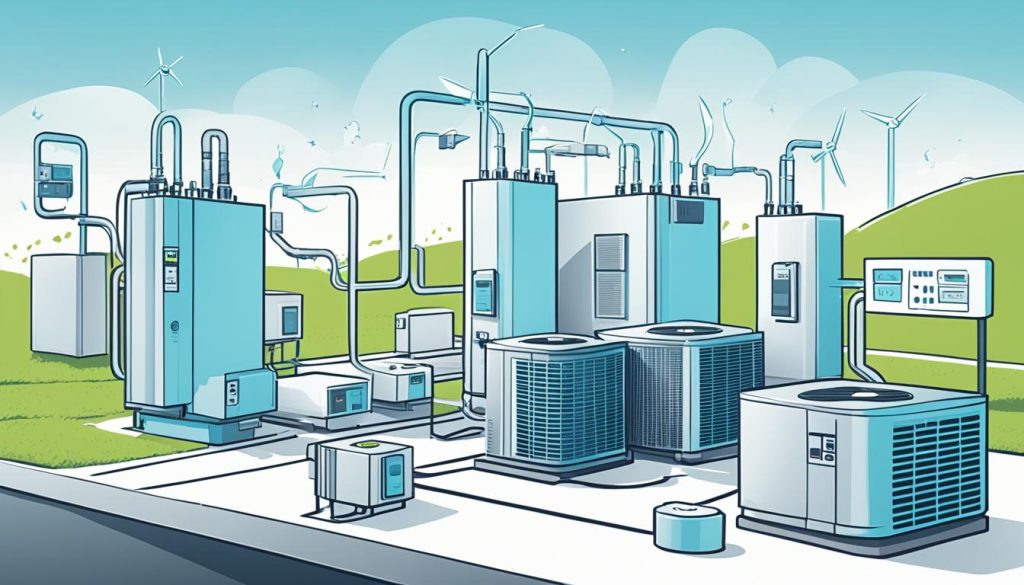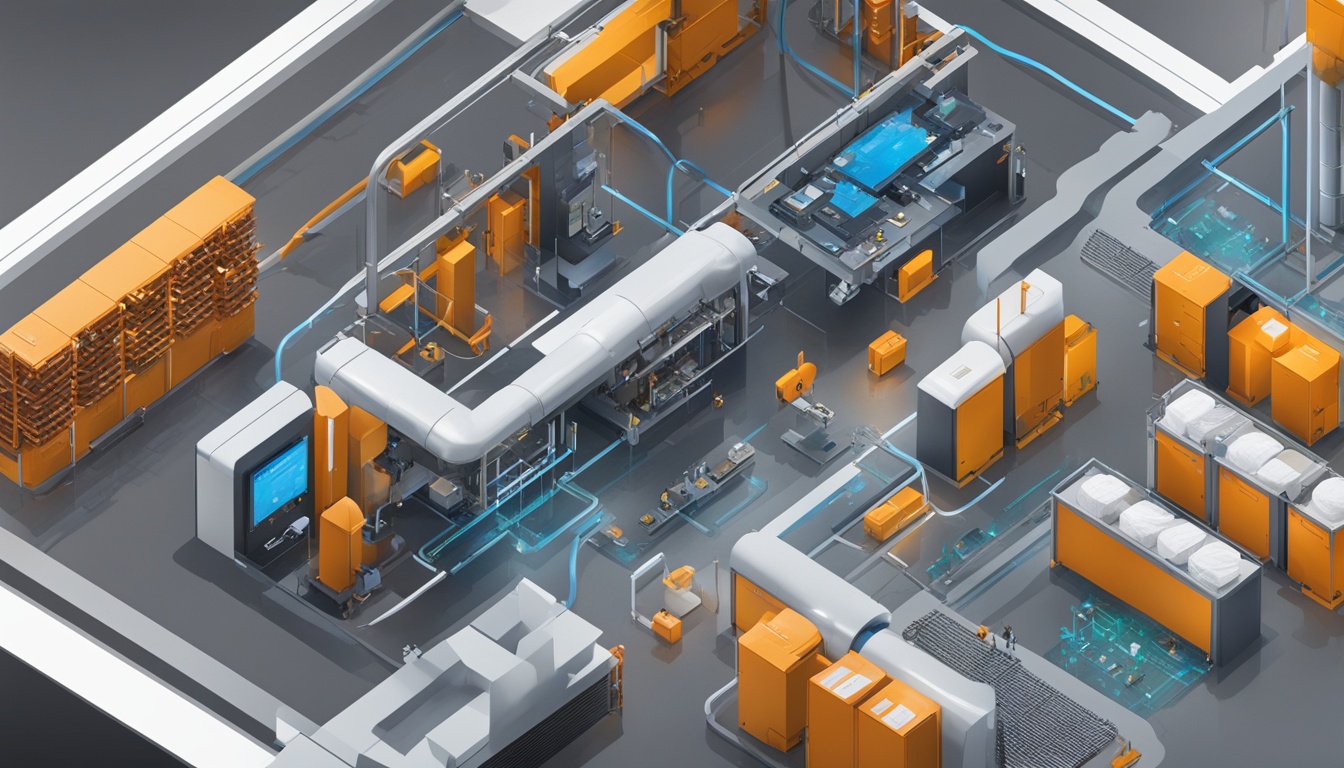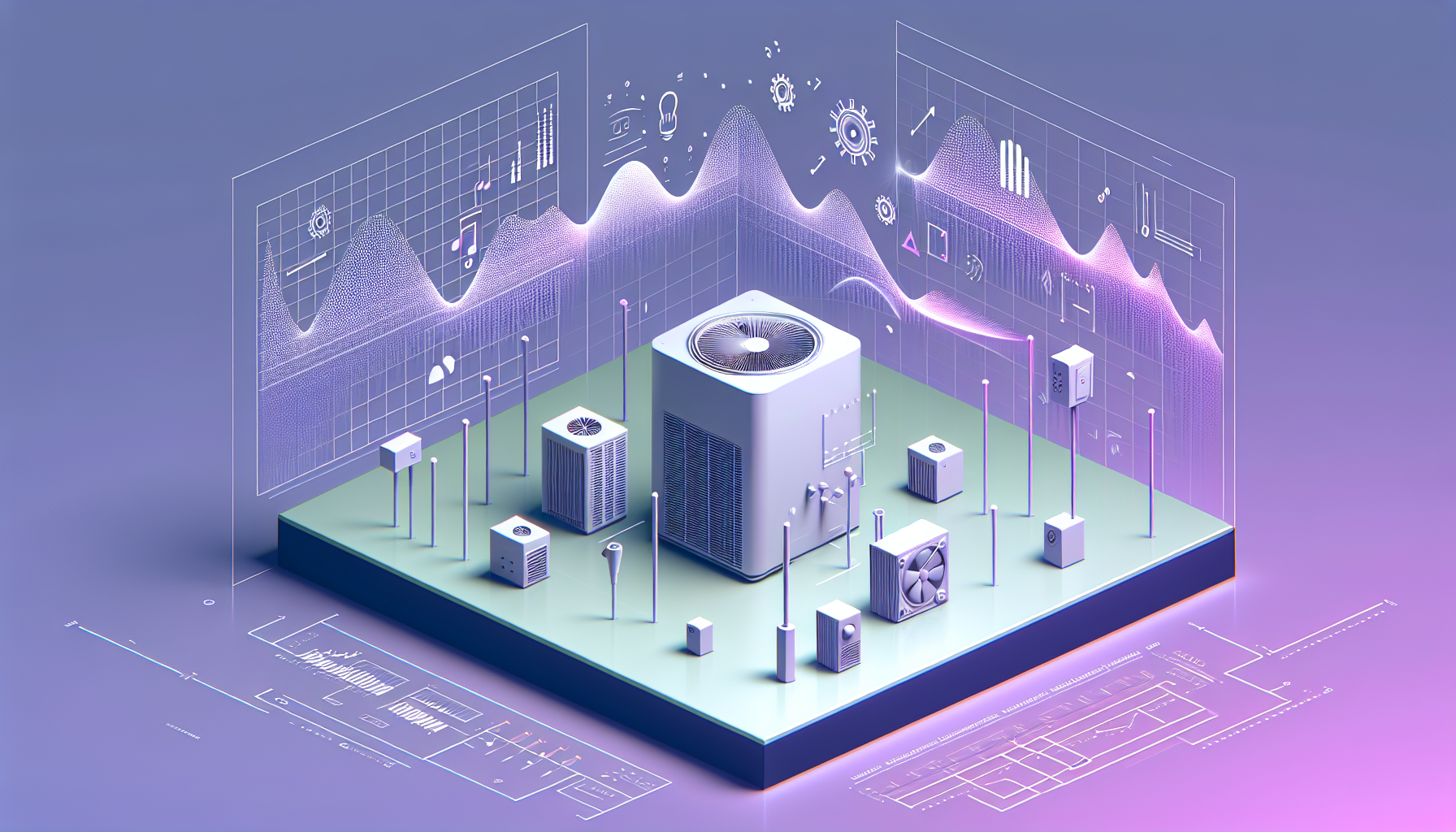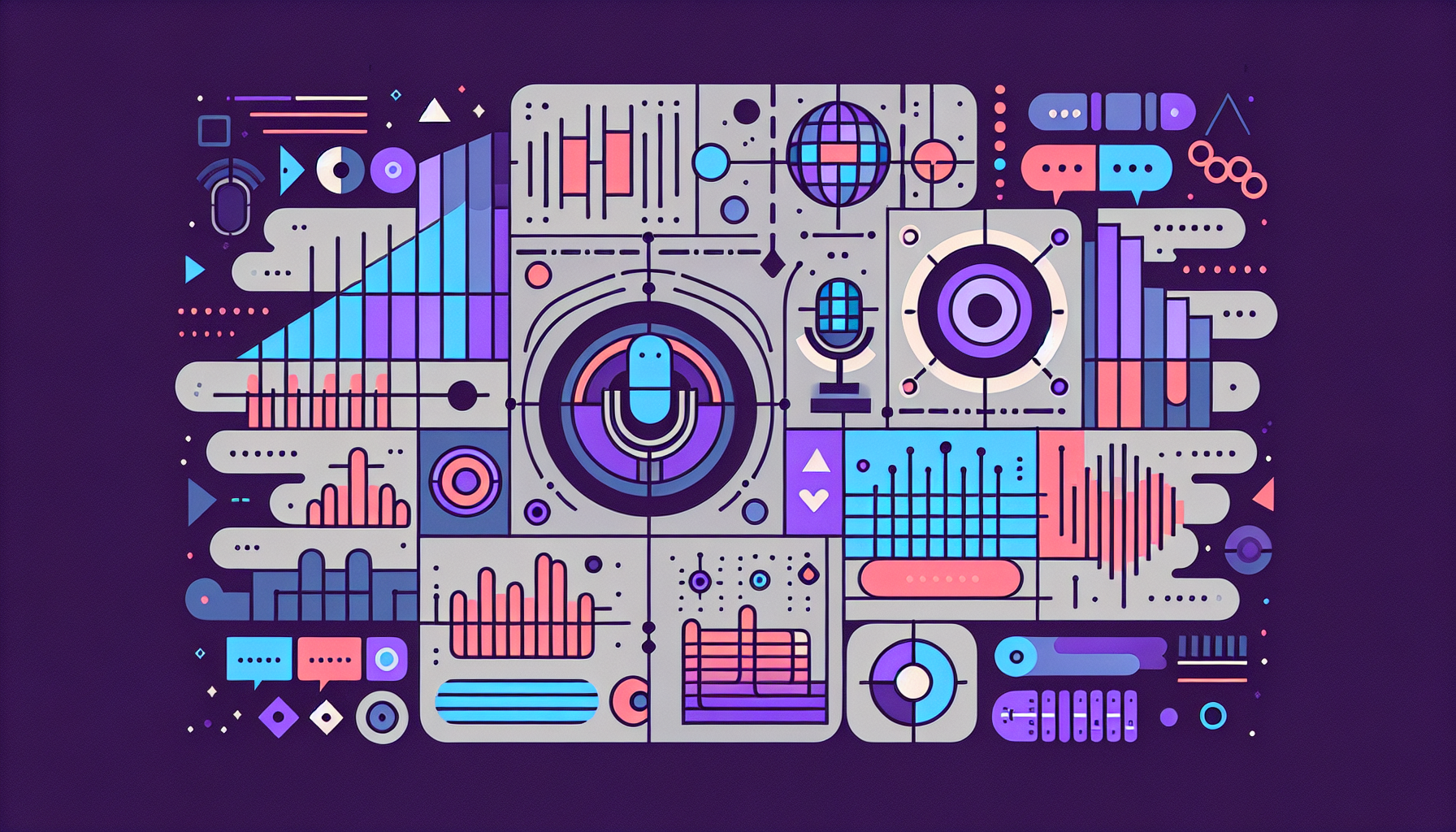To start predictive maintenance for HVAC systems, use IoT-enabled software. This includes smart sensors, data analytics, and automation tools. It lets you watch your HVAC equipment in real-time. You can see potential issues and plan maintenance ahead.
IoT-enabled HVAC systems are key in the Industrial Internet of Things. They change how buildings control the climate. With smart HVAC technology, you can cut costs and use energy better.
Predictive maintenance uses IoT sensor data to predict when equipment might fail. This lets you fix problems before they get worse. This approach means fewer unexpected breakdowns, longer equipment life, and better HVAC performance.
The smart HVAC control market is growing. Using these new solutions is key to staying ahead and managing buildings well. The next parts will show you how to use IoT-based predictive maintenance for your HVAC systems.
Understanding the Basics of IoT-Enabled HVAC Systems
IoT-enabled HVAC systems are changing how we manage buildings. They use smart tech to make spaces more comfortable, save money, and use energy better. Let’s look at what makes these systems special and how they’re changing indoor environments.
Defining IoT and Its Role in HVAC
IoT stands for Internet of Things, which means devices connected online. In HVAC, IoT sensors track temperature, humidity, and air quality. This info goes through networks to control systems. This creates smart buildings that adjust instantly to changes.
Components of IoT-Enabled HVAC Systems
IoT-enabled HVAC systems have several important parts:
- Smart thermostats
- Environmental sensors
- Communication modules
- Control interfaces
These parts work together to make a system that responds well. They collect data, process it, and adjust HVAC operations for the best performance.
Benefits of Smart HVAC Technology
Smart HVAC tech has many benefits:
| Benefit | Description |
|---|---|
| Energy efficiency | Reduces energy waste by optimizing system operation |
| Predictive maintenance | Identifies issues before they become major problems |
| Improved comfort | Maintains ideal temperature and air quality |
| Remote control | Allows management from anywhere via smartphone apps |
| Data-driven insights | Provides analytics for better decision-making |
By using IoT-enabled HVAC systems, building managers can make spaces more comfortable, efficient, and cost-effective. These smart systems are leading the way in building management.
The Importance of Predictive Maintenance in HVAC
Predictive maintenance changes how we manage HVAC systems. It uses condition monitoring and asset management to stop equipment failures before they start. This way, you avoid unnecessary service calls and meet energy efficiency goals.
With real-time data analysis, you can spot problems from afar and fix them quickly. This means less downtime, longer equipment life, and better energy use. HVAC systems use 39% of all energy in U.S. commercial buildings.
Using IoT-enabled software for preventative maintenance brings many benefits:
- Early detection of potential issues
- Reduction in unexpected breakdowns
- Improved energy efficiency
- Extended equipment lifespan
- Lower operational costs
Predictive maintenance greatly improves HVAC performance in several areas:
| Metric | Without Predictive Maintenance | With Predictive Maintenance |
|---|---|---|
| Equipment Downtime | 72 hours per year | 24 hours per year |
| Energy Consumption | 100% baseline | 15-30% reduction |
| Maintenance Costs | $10,000 per year | $6,000 per year |
| Equipment Lifespan | 10-15 years | 15-20 years |
By using predictive maintenance, you can turn your HVAC system into a proactive, efficient asset. This change boosts performance and helps with building sustainability goals.
Key Features of IoT Software for HVAC Predictive Maintenance
IoT software for HVAC systems adds a new level of smarts to predictive maintenance. These tools make operations smoother and more efficient. Let’s look at the main parts that make IoT-enabled HVAC maintenance a big change.
Real-Time Data Collection and Analysis
IoT software collects data from your HVAC system in real-time. It tracks temperature, humidity, energy use, and how well equipment is working. This info helps spot problems early, so you can fix them before they get worse.
Remote Monitoring Capabilities
With remote monitoring, you can check your HVAC system from anywhere. This lets technicians fix problems without coming to your place. It saves time and cuts down on travel costs, making maintenance more efficient.
Predictive Analytics Algorithms
Predictive analytics use past data to predict future issues. These smart algorithms learn your HVAC system’s habits. They can tell when parts might break or when maintenance is due. This way, you can prevent breakdowns and make your equipment last longer.
Automated Alert Systems
Automated alerts tell you right away if something’s wrong. These quick warnings help you fix problems fast. You can set up alerts for different situations, so you never miss important HVAC issues.
| Feature | Benefit |
|---|---|
| Real-Time Data Analysis | Quick problem detection |
| Remote Monitoring | Reduced on-site visits |
| Predictive Analytics | Proactive maintenance |
| Automated Alerts | Timely issue response |
These features work together to make a smarter, more reliable HVAC system. By using IoT software, you can greatly improve your maintenance plan. This keeps your HVAC running smoothly.
Selecting the Right IoT-Enabled Software for Your HVAC System
Finding the right IoT-enabled software for your HVAC system can change the game. You should look for software that meets your specific needs. Let’s dive into the main factors to consider when choosing.
System integration is key. Your new software must work well with your current HVAC setup. Choose solutions that fit with different brands and models. This makes the switch smoother and reduces downtime.
Scalability is also vital. As your business gets bigger, your HVAC needs will change. Pick software that can grow with you without needing a big update. This saves time and money later on.
Data security is a must in today’s digital world. Go for software with strong encryption and access controls. This keeps your HVAC system’s data safe and secure.
| Feature | Importance | Benefits |
|---|---|---|
| System Integration | High | Seamless operation, reduced downtime |
| Scalability | Medium | Future-proofing, cost-effective growth |
| Data Security | Critical | Protection against breaches, compliance |
Think about options like the FX30 Gateway for its advanced features and strong connectivity. This platform supports various networks and gives real-time usage info. It helps manage and control your HVAC system better.
Steps to Implement Predictive Maintenance for HVAC with IoT Software
Starting predictive maintenance for your HVAC system with IoT software takes several steps. This process boosts your system’s performance and lifespan. Let’s look at the key steps to follow.
Assessing Your Current HVAC Infrastructure
First, do a detailed check of your HVAC system. This check-up finds areas to improve and picks the best spots for IoT sensors. Look at your system’s age, how efficient it is, and what maintenance it gets now. This gives you a starting point for future comparisons.
Installing IoT Sensors and Devices
Next, set up IoT sensors. These sensors gather important info on your HVAC system’s performance. Put them in the right spots to watch temperature, humidity, air quality, and equipment status. The FX30 Gateway is a top choice for linking many sensors to one management system.
Integrating Software with Existing Systems
Integrating your IoT software with your current HVAC systems is key for smooth running. This link lets you analyze data better and control your HVAC gear more efficiently.
Training Staff on New Technology
Training your team well is crucial for the new tech to work smoothly. Teach them how to use the IoT software, understand the data, and act on alerts. This skill lets them make smart choices about maintenance and improving the system.
Establishing Maintenance Protocols
Make new maintenance plans using your IoT system’s predictive features. Set up alerts for possible problems and have plans for different situations. This way, you can stop breakdowns before they happen and make your equipment last longer.
| Implementation Step | Key Actions | Benefits |
|---|---|---|
| HVAC Infrastructure Assessment | Evaluate system age and efficiency | Identifies improvement areas |
| IoT Sensor Installation | Place sensors for data collection | Enables real-time monitoring |
| System Integration | Connect IoT software with existing systems | Enhances data analysis capabilities |
| Staff Training | Educate team on new technology | Improves system management |
| Maintenance Protocol Establishment | Create response plans for alerts | Prevents breakdowns and extends equipment life |
Overcoming Challenges in IoT Implementation for HVAC
Bringing IoT to HVAC systems opens up new possibilities, but it comes with challenges. You’ll face key issues that need careful planning and smart solutions. Let’s look at these challenges and how to beat them.
Addressing Data Security Concerns
Data security is crucial with IoT-enabled HVAC systems. Your building’s temperature and energy use data is sensitive. Here’s how to keep it safe:
- Use strong encryption protocols
- Implement multi-factor authentication
- Regularly update software and firmware
- Train staff on cybersecurity best practices
Managing Integration with Legacy Systems
Integrating old HVAC systems with IoT can be hard. Older systems weren’t made for IoT. Here’s how to connect them:
- Assess your current infrastructure
- Use IoT gateways to connect legacy equipment
- Consider phased upgrades to minimize disruption
Ensuring Scalability and Future-Proofing
Scalability is key for long-term success. Your IoT solution should grow with your needs. Here’s how to make sure it does:
- Choose flexible, modular IoT platforms
- Plan for increased data storage and processing needs
- Stay informed about emerging technologies like AI and edge computing

| Challenge | Solution | Benefit |
|---|---|---|
| Data Security | Encryption and authentication | Protected sensitive information |
| Legacy Integration | IoT gateways and phased upgrades | Seamless connectivity with existing systems |
| Scalability | Flexible platforms and future planning | Long-term adaptability and growth |
By tackling these challenges, you’ll set the stage for a successful IoT implementation in your HVAC system. Remember, the key is to balance current needs with future possibilities. This ensures your investment pays off for years to come.
Measuring the Success of Your IoT-Enabled Predictive Maintenance Program
You’ve started an IoT-enabled predictive maintenance program for your HVAC system. Now, it’s time to see how well it’s doing. By tracking key performance metrics, you can check if your new system is effective and find ways to get better.
First, look at energy savings. IoT sensors give you real-time data on energy use. This lets you spot where you’re wasting energy and use less. Compare your energy bills from now and last year to see how much you’ve saved.
Next, check how well maintenance is going. Keep track of how many emergency repairs you had before and after the new system. Fewer repairs mean your predictive maintenance is working. Also, see how long technicians take to fix each issue to see if you’re getting better at it.
To figure out your ROI, think about these things:
- Reduced operational expenses
- Increased equipment lifespan
- Improved first-time fix rates
- Decreased downtime
Use the data from your IoT system to make a detailed report. This will show the worth of your investment and where you can do better.
| Metric | Before IoT | After IoT | Improvement |
|---|---|---|---|
| Energy Consumption (kWh/month) | 10,000 | 8,500 | 15% |
| Emergency Repairs (per year) | 24 | 6 | 75% |
| Average Repair Time (hours) | 4 | 2.5 | 37.5% |
| Equipment Lifespan (years) | 10 | 13 | 30% |
By always checking these metrics, you can make your IoT-enabled predictive maintenance program better. This will help your HVAC system work its best.
Future Trends in IoT-Enabled HVAC Maintenance
The future of HVAC maintenance is changing fast with new technologies. Buildings are getting smarter, and so are your HVAC systems. They will work better and use less energy.
Artificial Intelligence and Machine Learning Integration
AI is changing how we maintain HVAC systems. Machine learning looks at lots of data to predict problems before they happen. This means you’ll save time and money and your equipment will last longer.

Edge Computing for Enhanced Performance
Edge computing is making HVAC systems better. It processes data right where it’s needed, making your system react quicker to changes. This leads to better temperature control and less energy use in your building.
Integration with Smart Building Ecosystems
HVAC systems will work closely with other building systems like lights and security. This creates a more efficient and comfortable space. It also uses less energy and makes people more comfortable and productive.
- Predictive maintenance powered by AI and machine learning
- Real-time adjustments using edge computing
- Seamless integration with other building systems
- Enhanced energy efficiency and sustainability
- Improved occupant comfort and productivity
These new technologies in IoT-enabled HVAC maintenance will make buildings smarter and more efficient. By using these technologies, you’ll help create sustainable and comfortable spaces for the future.
Conclusion
IoT-enabled HVAC systems are changing how we manage buildings. They bring big benefits like better energy use, lower costs, and more comfort for people inside. This smart technology is now a key part of keeping our buildings running well.
Predictive maintenance does more than save money. It helps you find and fix problems early, cutting down on downtime and making equipment last longer. This way of maintaining is a big win for managing buildings today.
But, starting with this technology has its challenges. You’ll face issues like keeping data safe, fitting it with your current systems, and training your team. Yet, the benefits are huge. IoT-enabled HVAC systems are key to making buildings more sustainable and efficient.
The future looks bright for HVAC maintenance, with AI and machine learning improving predictive skills. By leading the way, you’re not just looking after your HVAC. You’re making sure your whole building is ready for tomorrow. Jump on the IoT bandwagon in HVAC, and see your building become a model of efficiency and green living.





0 Comments